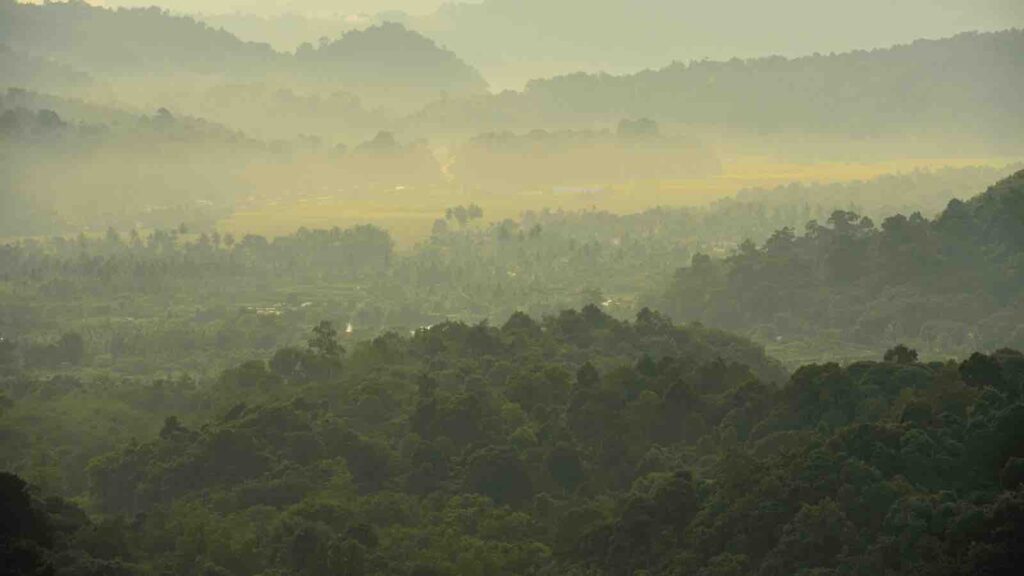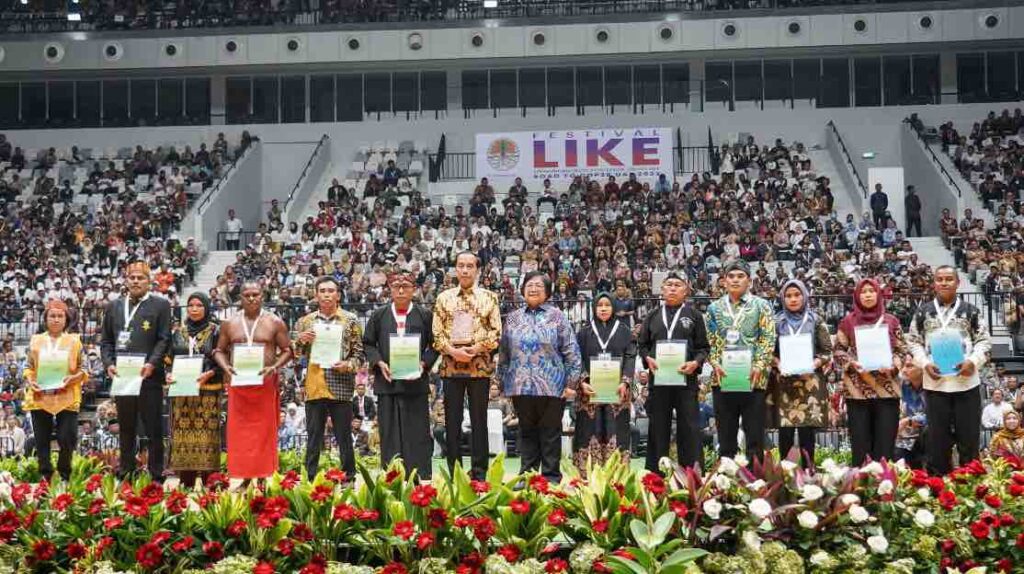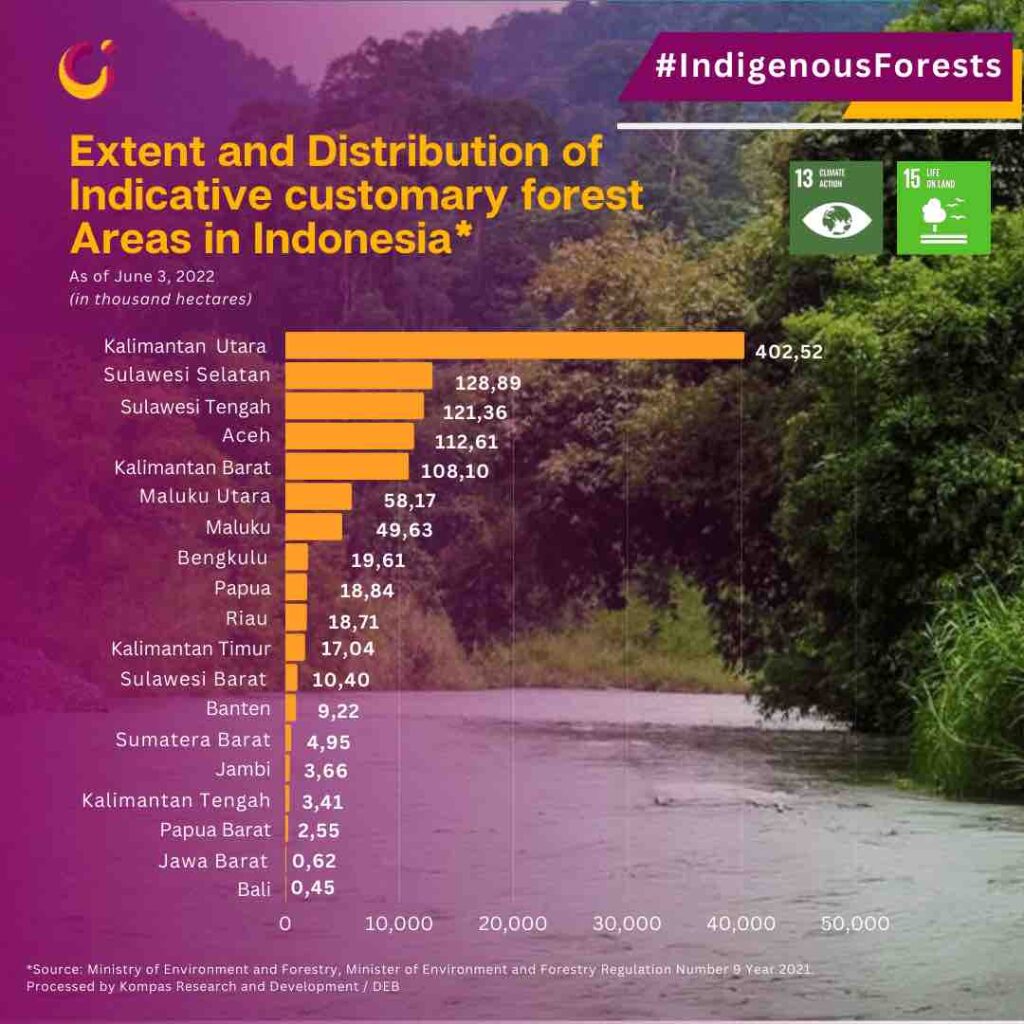Following a prolonged and strenuous battle, eight Indigenous legal communities in Aceh have ultimately secured the rights to control and oversee their ancestral customary forest, known as “Tanah Adat” in Bahasa Indonesia.
After a prolonged struggle and anticipation, eight indigenous law communities in Aceh. The recognized forests, vital to their livelihoods, are located in the districts of Aceh Jaya, Bireuen, and Pidie, totaling 22,549 hectares, of the proposed 105,147 hectares.
RELEVANT SUSTAINABLE GOALS


President Joko Widodo formally handed over the decision letters to these communities at the Environment, Climate, Forestry, and Renewable Energy Festival held from September 16-18, 2023, at Indonesia Arena, Jakarta. The Acting Governor of Aceh, represented by the Head of the Aceh Environment and Forestry Service A. Hanan, was present during the ceremony.
On this occasion, President Widodo also distributed 1,541 Social Forestry Decrees, covering an area of 1.048 million hectares, and Land Object of Agrarian Reform Decrees spanning over 107,000 hectares. Included within the Social Forestry Decrees were rights to 90,000 hectares of traditional forests for over 23 indigenous groups, Conservation Partnership Decrees for 607 groups, and Perhutani partnership for productive communities.
“By September 2023, the total achievement of Social Forestry reached over 6.37 million hectares, benefiting 1.29 million families across 9,642 groups or combined groups,” explained Minister Siti.
These recognized territories are spread across eight “mukim,” or sub-districts under Aceh jurisdiction, comprising several villages. The term “mukim” in Aceh refers to a unit of customary law community with a complete structure that has existed since Aceh was a kingdom. The communities have long proposed managing 4,200 hectares of these traditional forests, although it’s unclear how much of this area the government approved for management.
Khalidin, the head of Mukim Kunyet, said these forests have been managed by the local people for generations, with portions conserved for clean water sources, while others are cultivated to meet daily needs. The joyous communities see the recognition as the fruit of their long-term struggle, with the forests having been managed and conserved by generations for daily sustenance and conservation efforts.
However, the path to obtaining traditional forest licenses in Aceh had been impeded due to misunderstandings regarding regulations related to indigenous law communities. Researcher Teuku Muttaqin Mansur noted that several NGOs in Aceh have been pushing the central government to expedite the approval of traditional forest management, as historically, each mukim in Aceh does have an area of forest managed hereditarily.
Through the traditional forest management scheme, the government grants rights to indigenous people to control forests indefinitely, though the management by the indigenous community must align with the forest’s function.
“With this recognition, all village communities have the right to manage the forests under the supervision of the mukim leader,” stated Asrul, an official from the Aceh Environment and Forestry Service.
However, Yuli Prasetyo Nugroho, Coordinator of the Integrated Team for Verification of Proposed Traditional Forests in Aceh, acknowledged that not all traditional forests in Aceh recognized by the state correspond with the indigenous people’s proposal. Some issues found during verification include many proposal maps where many people were not involved from the planning to mapping stages. He emphasized that recognizing traditional forests must be accurate culturally, scientifically, and in accordance with laws and regulations.
“The verification process not only uses a technocratic forestry approach but also anthropological and sociological approaches,” added Yuli.
For Ilyas, leader of Mukim Beungga in the Pidie district, the recognition, although smaller than their initial proposal of 10,900 hectares, is a joyous victory. “We have been fighting for the right to manage the forest in a traditional way for a long time. Efforts to gain recognition of rights to traditional forests in a structured manner only began in 2016,” he expressed.
This effort commenced with inter-mukim deliberations for proposing traditional forests, participative mapping, approval of boundaries between mukim and gampong territories, and compiling proposal documents for traditional forests to the government.”
You may also be interested in :
Indonesia’s Deforestation Revolution : A Global Blueprint For Sustainable Forest Management




